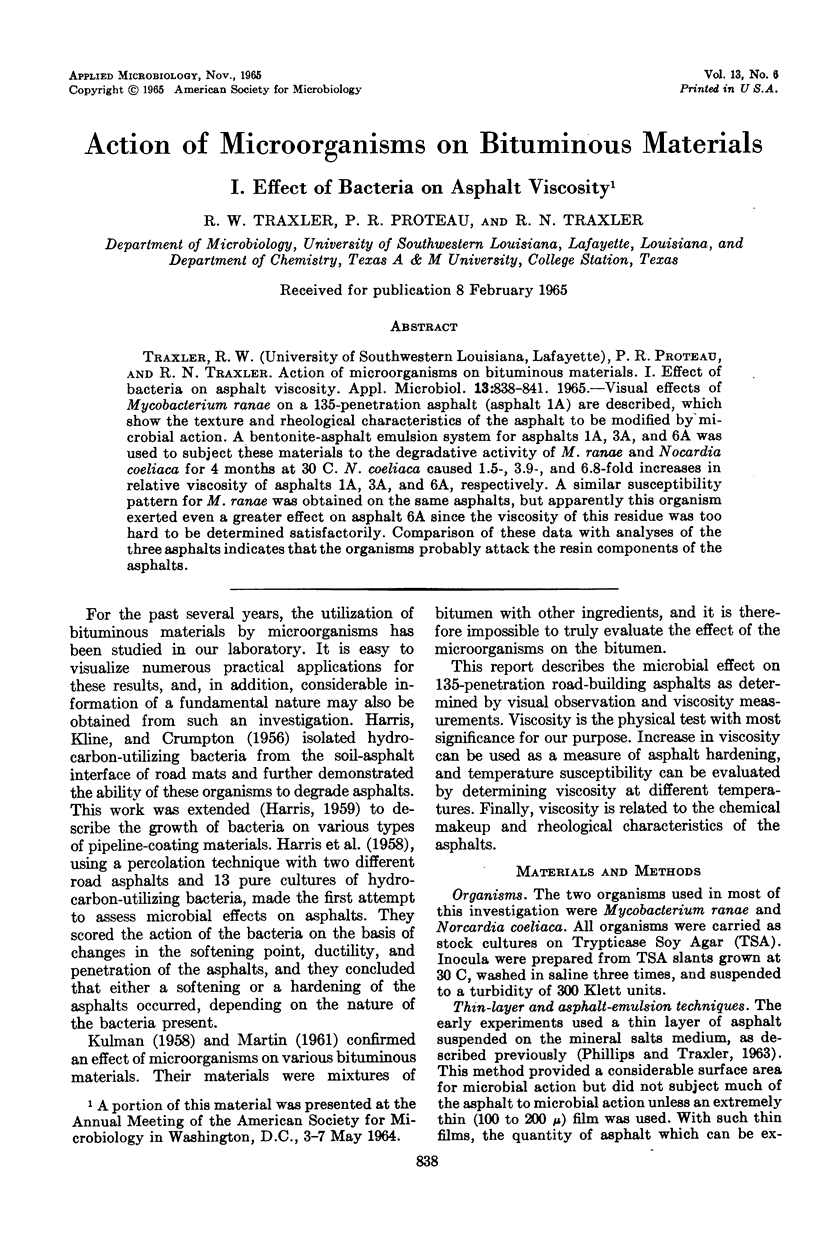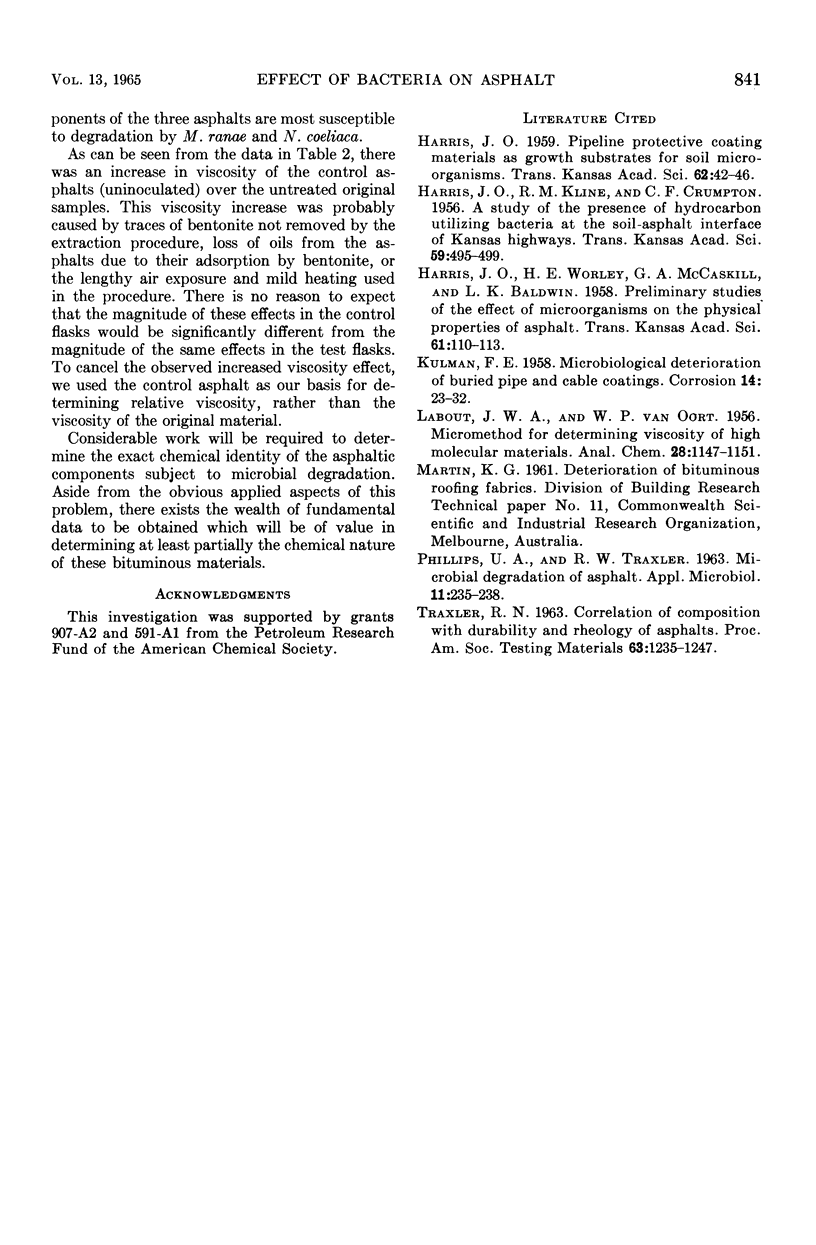Abstract
Visual effects of Mycobacterium ranae on a 135-penetration asphalt (asphalt 1A) are described, which show the texture and rheological characteristics of the asphalt to be modified by microbial action. A bentonite-asphalt emulsion system for asphalts 1A, 3A, and 6A was used to subject these materials to the degradative activity of M. ranae and Nocardia coeliaca for 4 months at 30 C. N. coeliaca caused 1.5-, 3.9-, and 6.8-fold increases in relative viscosity of asphalts 1A, 3A, and 6A, respectively. A similar susceptibility pattern for M. ranae was obtained on the same asphalts, but apparently this organism exerted even a greater effect on asphalt 6A since the viscosity of this residue was too hard to be determined satisfactorily. Comparison of these data with analyses of the three asphalts indicates that the organisms probably attack the resin components of the asphalts.
Full text
PDF



Images in this article
Selected References
These references are in PubMed. This may not be the complete list of references from this article.
- Phillips U. A., Traxler R. W. Microbial Degradation of Asphalt. Appl Microbiol. 1963 May;11(3):235–238. doi: 10.1128/am.11.3.235-238.1963. [DOI] [PMC free article] [PubMed] [Google Scholar]




